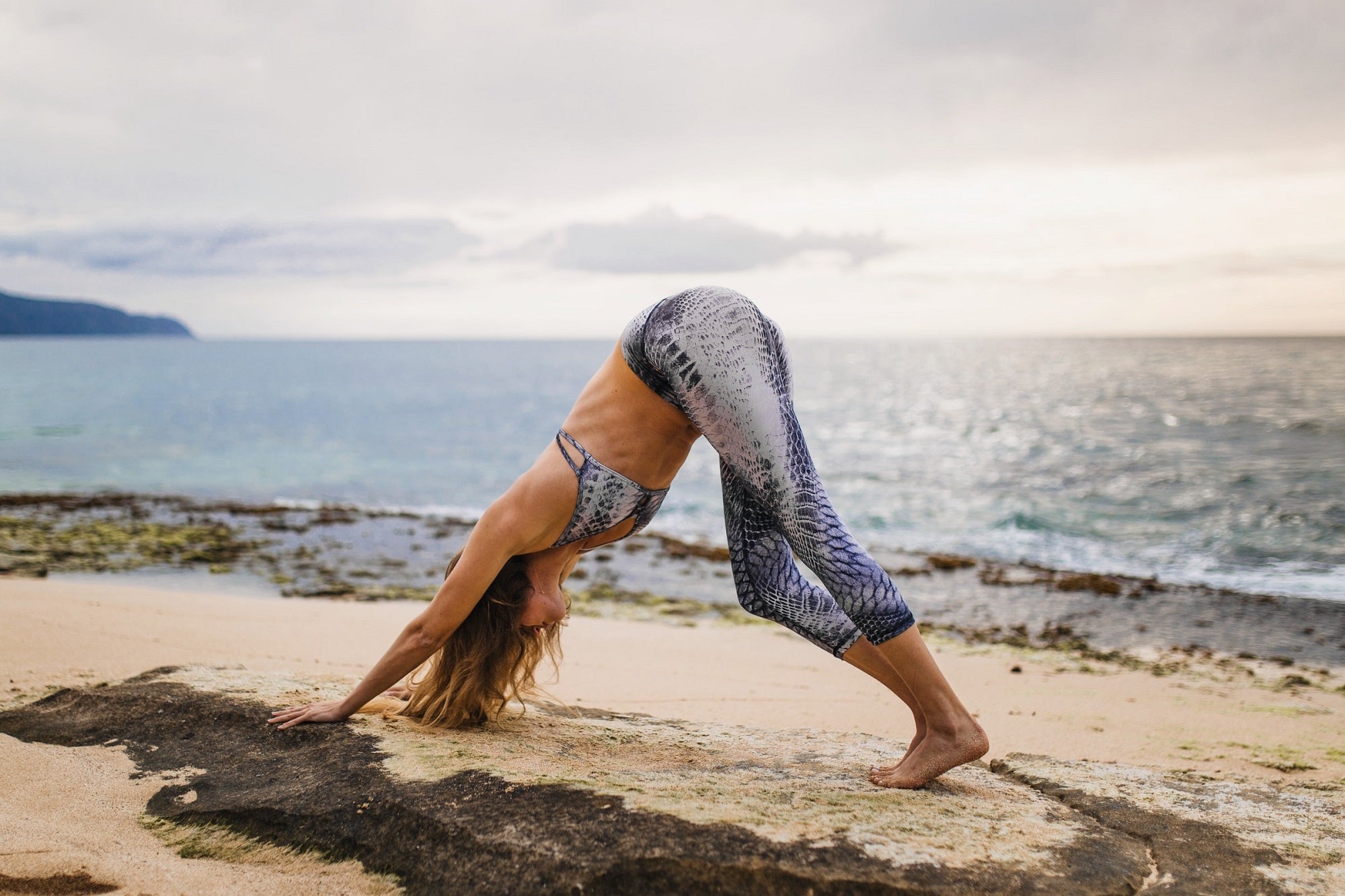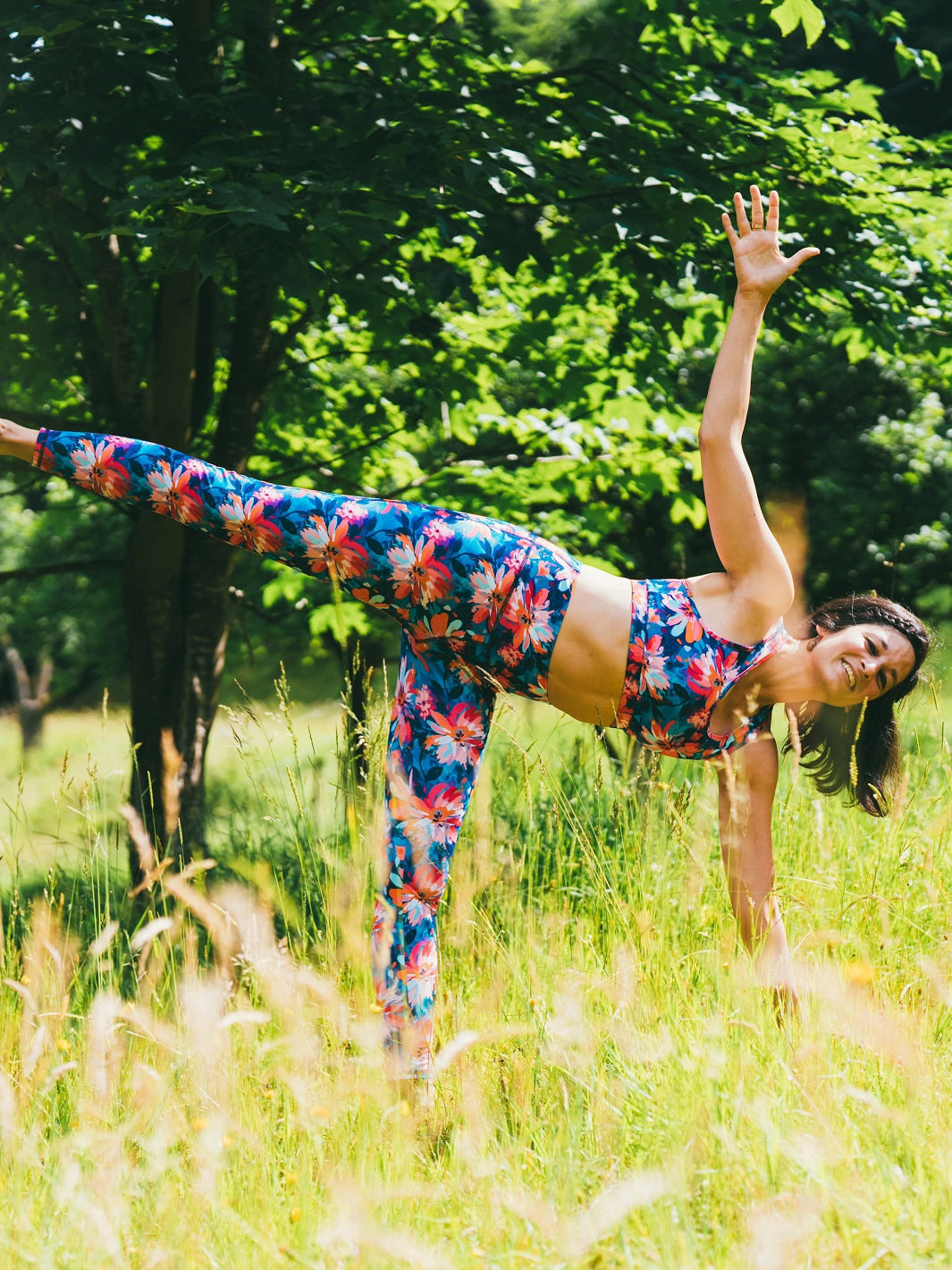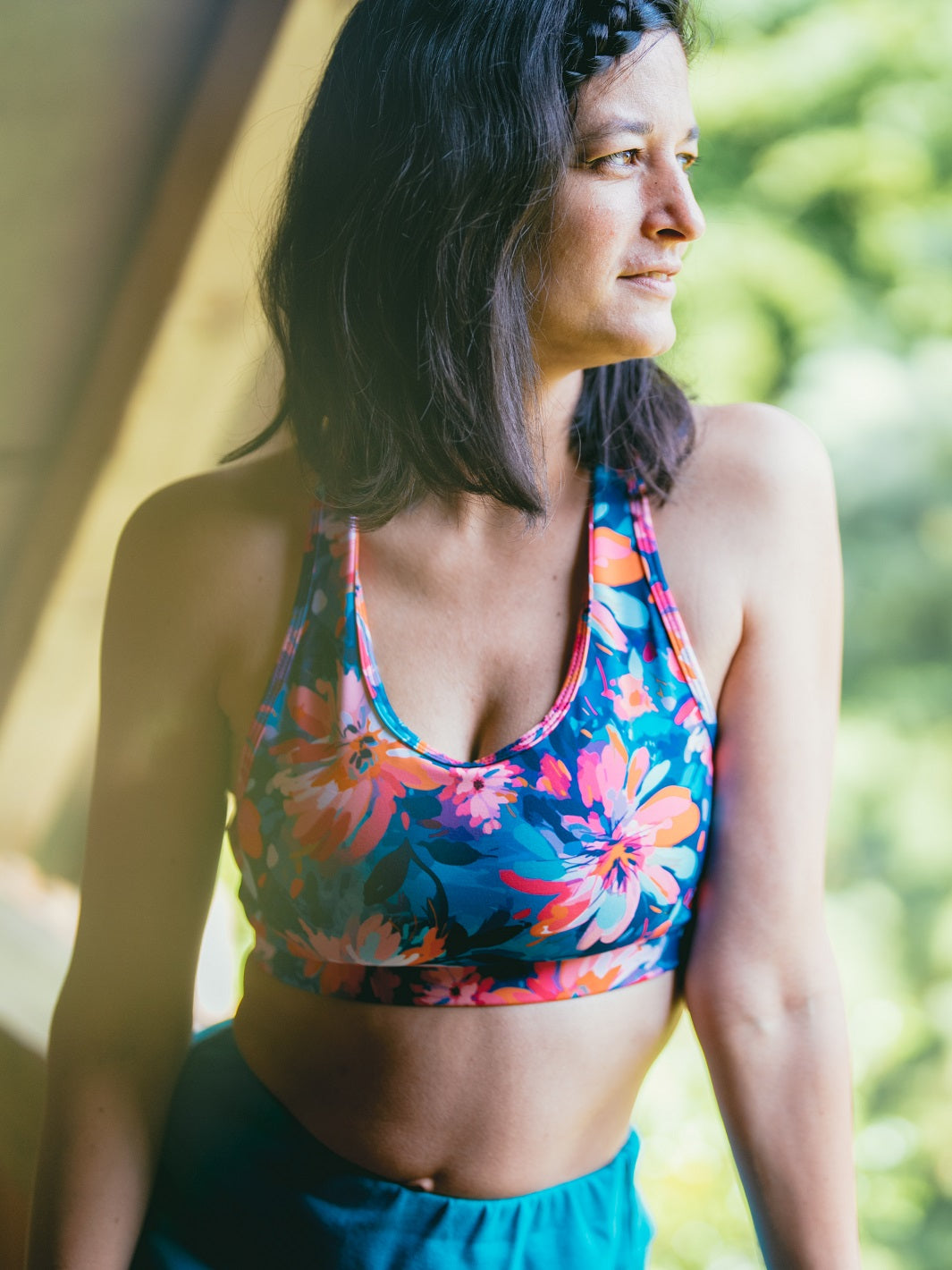This article is additional information regarding the personal development exercise proposed for the month of April (Blooming - I am filled with beautiful energy) in our positive affirmations card game .
As the spring equinox approaches, some yogis prepare to celebrate the change of season with a series of 108 sun salutations. Are you ready to do the asana for them?
If you think you are not up to the challenge, get rid of your false beliefs here ;-)
From the Sanskrit Surya Namaskar, salutation to the sun is the literal translation: surya means “to shine” and designates the big star, namas is “adoration” and finally kar means “to do”.
The sun salutation is preferably practiced in the morning or at the start of a yoga session for a nice complete warm-up of the body.
It is composed of a fluid sequence of two sets of 12 yoga postures of different categories, with a few variations.
In fact, the census of the mid-1990s distinguished no less than 17 different compositions!
Between devotional practice, military training and public health measure, the sun salutation has origins worthy of The Iliad and the Odyssey.
Originally, it is a rite of worship to the sun god of the Vedas “Surya”, which Hindus and Parsis consider a religious duty. But that was in the 1200s BC.

A quick trip in the time machine and here we are now in the 17th century in India, at a time when the great general Shivaji was racking his brains to know how to defeat the Mughal Empire.
Samarth Ramdas, his guru and professional in sun salutations at the gentle rhythm of 1200 sequences per day, offered to take charge of the training of his warriors himself, who quickly became as flexible as they were strong.
But the sun salutation as we know it today has much more recent origins.
At the beginning of the 20th century, the Raja of Aundh, visibly very involved in the well-being of his subjects, was thinking about an effective way to make them stronger, physically and spiritually. He took up his pen and described in his book “The ten-point way to health: Surya Namaskar” the sun salutation as we practice it.
Well, what if we started doing it too?
The sun salutation can be practiced alone, for fifteen to twenty minutes. This intense morning routine would be the equivalent of a full yoga session. To the wise...
The more regularly we practice yoga, the more its beneficial effects are felt! Here are some tips for making yoga a daily routine and transforming yourself day by day!

In order to reconcile business with pleasure, we suggest you recite the positive affirmation for the month of April “I am filled with beautiful energy” for the duration of the exercise. Facing the sunrise, towards the East, the sun's rays warming your feet, we begin with:
1. The mountain (Tadasana) : in the starting position, we find ourselves standing, feet placed hip-width apart, hands in prayer, palms together.
2. The rear half-moon (Urdhva Hastasana) : on an inspiration, we stretch the arms backwards, opening the chest wide, the hands remain in prayer.
3. The stork (Uttanasana) : while exhaling, we bend the torso forward while keeping the back straight, the hands touch the ground.
4. Forward lunge (Anjaneyasana) : on an inhale, place the left leg back, knee on the ground. The right leg is bent, the foot under the knee and between both hands. The chest is open, the head raised.
5. The plank (Kumbhakasana-dandâsana) : while holding the breath, the right leg extends backwards, the back is straight in line with the legs, the wrists are aligned under the shoulders.
6. The 8-point salutation (Ashtanga-namaskara ) : on an exhalation, place your knees on the ground, then your chest and finally your forehead. The feet are resting on the toes, and the back is slightly arched.
7. Upward facing dog (Urdhva mukha śvānāsana) : on an inhale, place the weight of the body on both hands and on the tops of both feet, arms and legs straight. The back is in slight backward flexion.
8. Downward-facing dog (Adho Mukhasvanasana) : while exhaling, lean on your hands to support yourself on the soles of your feet and raise your pelvis into the air. The back is straight, the knees bent if necessary.
9. The lunge forward (Anjaneyasana) : we return to the lunge forward on an inhalation (same posture as in 4), right foot between the hands, left leg stretched back.
10. The stork (Uttanasana) : on an exhalation, we continue with the stork posture (same posture as in 3) by bringing the two feet side by side, the torso bent and the hands extended downwards.
11. The rear half-moon (Urdhva Hastasana) : on an inspiration, we stand up completely and tilt the outstretched arms back, the hands join together in prayer.
12. The mountain (Tadasana) : on an exhalation we return to the starting position.
Once this half series has been completed, we reproduce the same sequence by changing feet in postures 4 and 9 of the lunge forward, the right leg behind.

Depending on the rhythm and frequency chosen, the sun salutation can be a rather meditative or energizing exercise.
With the practice of full breathing and alternating the tilt of the back, sometimes forward, sometimes backward, heat circulates more and more freely throughout the body.
Let yourself be overwhelmed by the flow of energy generated by this exercise to reconnect with yourself!
Discover the yoga exercise proposed for the month of May: Balance postures to regain balance !
Discover here our eco-responsible yoga outfits made in France from recycled materials, perfectly suited to practicing all types of yoga!
To learn more about all the different types of yoga and identify which one is right for you, click here:
- Vinyasa Yoga
- Nidra Yoga
- Iyengar Yoga
- Yin Yoga
- Ashtanga Yoga
- Dervish Yoga
- Kundalini Yoga
- Ananda Yoga
- Kripalu Yoga
- Hatha Yoga
- Bikram Yoga
- Jivamukti Yoga
- Aerial Yoga
And so you don't miss any Géopélie news, subscribe to our newsletter here at the bottom of the page 👇 or here , we only send a maximum of two per month!
Photo credits :
- Madison Lavern
- Mor Shani
- Patrick Malleret
Sources:






Leave a comment